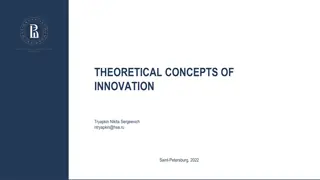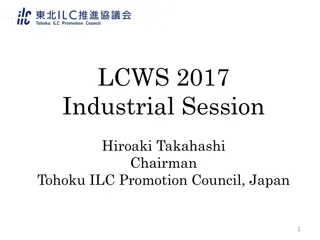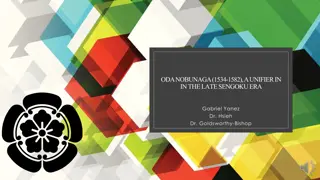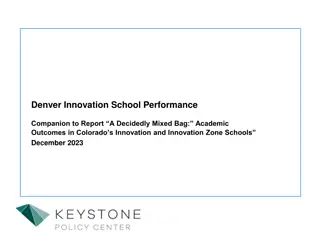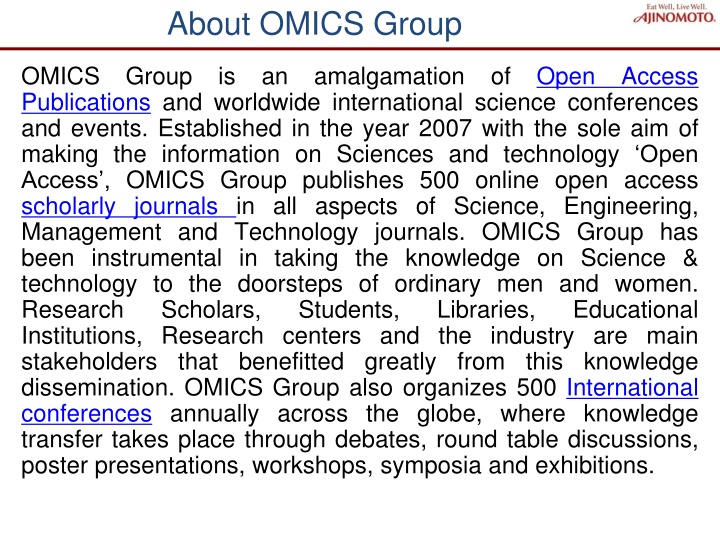
OMICS Group: Publications and International Science Conferences
OMICS Group, established in 2007, is dedicated to providing open access to scientific information through 500 online scholarly journals in various fields. They organize 500 international conferences annually, facilitating knowledge transfer through debates, workshops, and more. This summary highlights the group's impact on research scholars, students, institutions, and industries worldwide.
Download Presentation

Please find below an Image/Link to download the presentation.
The content on the website is provided AS IS for your information and personal use only. It may not be sold, licensed, or shared on other websites without obtaining consent from the author. If you encounter any issues during the download, it is possible that the publisher has removed the file from their server.
You are allowed to download the files provided on this website for personal or commercial use, subject to the condition that they are used lawfully. All files are the property of their respective owners.
The content on the website is provided AS IS for your information and personal use only. It may not be sold, licensed, or shared on other websites without obtaining consent from the author.
E N D
Presentation Transcript
About OMICS Group OMICS Publications and worldwide international science conferences and events. Established in the year 2007 with the sole aim of making the information on Sciences and technology Open Access , OMICS Group publishes 500 online open access scholarly journals in all aspects of Science, Engineering, Management and Technology journals. OMICS Group has been instrumental in taking the knowledge on Science & technology to the doorsteps of ordinary men and women. Research Scholars, Students, Institutions, Research centers and the industry are main stakeholders that benefitted greatly from this knowledge dissemination. OMICS Group also organizes 500 International conferences annually across the globe, where knowledge transfer takes place through debates, round table discussions, poster presentations, workshops, symposia and exhibitions. Group is an amalgamation of Open Access Libraries, Educational
OMICS International Conferences OMICS International is a pioneer and leading science event organizer, which publishes around 500 open access journals and conducts over 500 Medical, Clinical, Engineering, Life Sciences, Pharma scientific conferences all over the globe annually with the support of more than 1000 scientific associations and 30,000 editorial board members and 3.5 million followers to its credit. OMICS Group has organized 500 conferences, workshops and national symposiums across the major cities including San Francisco, Las Vegas, San Antonio, Omaha, Orlando, Raleigh, Santa Clara, Chicago, Philadelphia, Kingdom, Valencia, Dubai, Beijing, Hyderabad, Bengaluru and Mumbai. Baltimore, United
Metabolic control of the TCA cycle by the YdcI transcriptional regulator in Escherichia coli Yousuke Nishio Institute for Innovation AJINOMOTO Co., Inc.
Agenda Background Why is TCA cycle important? Bioinformatics approach for network finding DNA motif finding process Functional validation of YdcI in E. coli L-Glu fermentation
Key messages Network analysis will provide attractive hypothesis which is worthy of the experimental validation. Basic idea in fermentation study will provide metabolism based understanding in bacteriology.
Background : fermentation technology Scale up Bacterial cell number will be increased to more than 7,500,000 times from test tube. By controlling bacterial cell growth and material production, we have developed industrial fermentation technology.
Formulation of metabolism in fermentation General concept of metabolism in fermentation Product Substrate (ex. Glucose) By-product Cells Stoichiometry for cells in aerobic fermentation condition ??????? ????????? = ????????? + ?????? + ?????? Protein, DNA, RNA, lipid, murein and glycogen are necessary for biomass formation. These molecules are provided through metabolic reactions. Energy molecule (ATP, NAD(P)H) are provided through metabolic reactions and respiration.
Amino acid fermentation by E. coli Glucose ArcA (E. coli) Val, Leu, Ile Pyruvate Acetyl-CoA Asp, Asn, Thr, Lys Ser, Gly, Cys Oxaloacetate Citrate Malate Isocitrate Fumarate 2-ketoglutarate Glu, Gln, Arg, Pro Succinate Succiny-lCoA Stoichiometry for complete oxidation of pyruvate in TCA cycle Pyruvate + 3 H2O + GDP + 2~P + 4 NAD++ FAD = 3 CO2+ GTP + 4 NADH + FADH + 4 H+ Combine with respiration, complete oxidation of pyruvate generates 15 ATP molecules. Regulation of carbon flux into TCA cycle is important for cell growth control and amino acid fermentation.
ArcAB two-component system in E. coli Changes of O2 concentration ArcB ArcB Sensor kinase ATP P P Response regulator ArcA ArcA Promote gene expression Repress gene expression cydAB ndh, etc TCA cycle genes cyoABCDE , etc Gene disruption of arcA has been shown to enhance expression of TCA cycle genes. As a result, carbon flux into TCA cycle will be increased. Gene amplification of arcA may not repress expression of TCA cycle genes. Main purpose of this study Finding out regulatory factor which represses carbon flux into TCA cycle
DNA array data analysis DNA array data analysis result By data analysis of arcA and arcB gene in E. coli1), we extracted genes whose expression are negatively regulated by ArcA. control arcA- arcB- Result Among 21 genes whose expression levels were increased, only 9 genes (lpdA, acnB, gltA, sdhCB,sucCD, icdA, and glcB) have been known as ArcA regulon. We observed the increase of expression levels due to unknown regulation system. Working hypothesis Through gene network analysis of these 21 genes, we may find out new regulation system involved in TCA cycle regulation. 1) Oshima, T. et al., Mol Microbiol, 46, 281-291, 2002
Gene network analysis Upstream of initial codon (500bp) Similar expression pattern gene 1 gene 2 gene 3 gene 4 gene 5 Locally conserved sequence (DNA motif) Network 1 Network 2 Network 3 Key concept is finding out all of DNA motifs Network formation is defined per DNA motif
DNA motif detection Step 1 : input sequence Step 2 : breakdown to elements 20mer or 25mer or 30mer by wordcount(EMBOSS) Step 3 : finding similar sequence Step 4 : aligning elements Step 5 : weak similarity Input sequence DNA motif Finding similar sequence by HMMalign (MATLAB) Multiple Alignment by MEME 20mer, 25mer or 30mer elements will have similar sequence in input sequence. fuzznuc (EMBOSS) Belonging to the same gene network
DNA motif comparison Motif A Motif B Information content matrix for Motif A 1 0 -0.133 -0.133 0.8578 1.3995 0.1966 1.3995 1.6932 1.6932 0 -0.084 -0.133 -0.133 1.3995 0.8578 -0.084 0 -0.133 -0.133 -0.133 -0.084 2 3 4 5 6 7 8 9 10 11 0 12 0 -0.133 -0.133 1.1204 1.3995 -0.133 1.1204 1.6932 0 -0.084 13 14 15 16 17 18 19 A G T C 0.392 -0.084 0 -0.133 -0.133 -0.084 1.1204 -0.133 -0.133 0 0.0342 1.1204 1.3995 -0.084 1.3995 1.3995 -0.084 0.392 -0.133 -0.133 -0.084 0 0 0 -0.084 0 -0.133 0 0 0 0 0 0.0342 0.0342 -0.133 0 0.8578 0 -0.133 0 0 -0.133 0 0 Information content matrix for Motif B 1 0 -0.118 2 3 0 1.6459 4 5 2 0 -0.118 -0.118 -0.118 0 0.8444 0.8444 0 0.1064 -0.118 -0.131 6 0 0.0195 1.4754 0.7014 0.8444 0.1064 7 8 9 10 11 12 0 -0.105 0.0195 1.4754 13 14 15 A G T C 1.6459 -0.131 1.8208 1.8208 0 0 -0.118 0 0 0 -0.118 -0.118 0.5653 -0.105 -0.118 0 0.3167 -0.052 0.8444 0.2061 0.8444 0.7014 -0.105 0 -0.131 0 -0.131 -0.118 -0.131 0 0 0 -0.131 0 [ Information content calculation ] fbis the appearance frequency of A, G, C and T in a residue position of the DNA motif, and Pbis the A, G, C, and T frequencies in the E. coli genome, which were each set to 25%. ? ?? ?? IC = ??log2 ?=?
DNA motif comparison Motif A Similarity score = 19.58 Motif B Residue of Motif B 0 0 0 2.804 0.804 0 0.804 5.368 3.368 1.368 -0.63 -2.63 -4.63 -6.63 -8.63 -10.6 -12.6 -14.6 -16.6 -18.6 -20.6 0 -0.25 3.368 6.94 4.94 2.94 0.94 -1.06 -3.06 -5.06 -7.06 -9.06 -11.1 -13.1 -15.1 -17.1 0 -0.21 1.368 4.94 8.369 6.656 4.656 2.656 0.655 -1.34 -3.34 -5.34 -7.34 -9.34 -11.3 -13.3 0 0 -0.37 2.94 7.254 11.17 9.168 7.168 5.168 3.168 1.168 -0.83 -2.83 -4.83 -6.83 -8.83 0 0.011 -0.18 0.94 5.254 9.168 11.14 9.139 7.407 5.407 3.407 1.407 -0.59 -2.59 -4.59 -6.53 0 -0.22 -0.15 -0.16 3.261 8.053 9.17 11.2 11.24 9.237 7.237 5.237 3.237 1.237 -0.76 -2.53 0 0 -0.42 -0.15 2.645 6.647 8.039 9.218 13.71 12.43 10.69 8.685 6.685 4.685 2.685 1.736 0 -0.22 0.016 -0.34 0.645 4.647 6.683 8.101 11.71 0 -0.37 1.827 2.072 0.072 2.647 5.609 7.643 9.714 12.01 13.89 13.73 11.73 0 -0.32 2.183 4.385 2.385 0.647 3.839 6.801 7.714 10.16 11.95 15.08 13.98 12.92 10.92 8.924 0 1.855 0.183 2.385 4.403 2.403 1.839 4.801 6.686 8.157 10.05 13.08 15.71 0 -0.14 4.419 2.747 2.403 4.137 3.6 3.034 4.686 7.036 8.046 11.23 13.71 16.92 14.92 12.92 0 -0.4 2.419 6.983 4.983 2.983 5.335 4.795 2.854 5.036 6.866 9.229 11.71 14.92 17.92 15.92 0 0.011 0.419 4.983 8.845 7.224 5.224 5.302 6.466 4.466 6.004 7.229 9.711 12.92 15.92 19.58 0 -0.14 -0.15 2.983 7.286 11.64 9.644 7.644 7.377 7.447 5.657 6.162 7.711 10.92 13.92 17.98 0 -0 -0.06 0.983 5.286 9.644 11.76 9.764 7.764 7.294 7.221 5.672 6.057 8.921 11.92 15.98 0 -0 -0.07 0.003 3.286 7.644 9.764 11.81 11.42 9.417 8.239 7.369 5.679 6.921 9.916 13.98 0 0.017 -0.45 -0.32 2.79 6.673 7.764 9.814 14.31 12.56 10.85 8.854 7.342 1 2 3 4 5 6 7 8 9 10 -20 11 12 13 -26 14 15 0 1 2 3 4 5 6 7 8 9 -2 -4 -6 -8 -10 -5.2 -12 -7.2 -14 -9.2 -11.2 -13.2 -15.2 -17.2 -19.2 -21.2 -23.2 -25.2 -16 -18 -22 -24 -28 -30 -1.2 -3.2 Residue of Motif A 14 12.78 10.78 8.781 6.781 4.781 3.259 10 11 12 13 14 15 16 17 18 19 9.75 7.75 5.75 13.8 12.75 10.93 5.39 7.916 12.43 DNA motifs were classified into two groups based on their similarities.
Predicted gene network ArcA lpd acnB fepA gltA sdhCB,sucCD yejG mqo b1163 osmB glcB acs ydcI New knowledge YdcI Networking by DNA motif Weak similarity icdA yhhX hdeA purEK bglJ Disagreement with previous knowledge YdcI is a LysR family predicted HTH transcriptional regulator YdcI is suggested to regulate gene expression on TCA cycle. Attractive hypothesis is proposed by DNA motif based gene network.
Model for experimental validation Glucose IHF ArcA YdcI p1 p2 gltA Pyruvate Citrate synthase activity has been known to show high sensitivity for L-Glu fermentation in E. coli(1). Acetyl-CoA YdcI Oxaloacetate Citrate Malate Isocitrate Fumarate 2-ketoglutarate L-Glu Succinate Succinyl-CoA Confirm the effect of ydcI gene amplification or deletion on L-Glu fermentation Confirm the effect of ydcI gene amplification or deletion on citrate synthase activity (1) Nishio Y et al., Analysis of l-glutamic acid fermentation by using a dynamic metabolic simulation model of Escherichia coli, BMC Systems Biology 2013, 7:92
L-Glu fermentation result 20 15 OD600 / Glu (g/l) 10 OD600 5 Glu(g/L) 0 sucA sucA ydcI sucA / pMW218 (Test for ydcI gene amplification) sucA / pMW218-ydcI (Test for ydcI gene deletion) Condition: glucose 40g/L, MS medium, 24h & 37oC cultivation Cell growth (OD600) should not be different in this condition because of sucA genotype. L-Glu accumulation is increased by ydcI gene deletion & decreased by ydcI gene amplification YdcI may control carbon flux into TCA cycle.
Relative activity of citrate synthase Oxaloacetate + Acetyl-CoA Citrate + CoA CoA + DTNB TNB + CoA-derivative Increase of 412nm absorbance * 1.6 1.4 ** * : p<0.05 ** : p<0.01 M/min/mg protein 1.2 Relative activity 1 0.8 0.6 0.4 0.2 0 sucA sucA ydcI sucA / pMW218 sucA / pMW218-ydcI Expression level of citrate synthase is increased by ydcI gene deletion and decreased by ydcI gene amplification YdcI may control citrate synthase expression levels by regulating gltA gene expression.
Proposed TCA cycle regulation in E. coli Glucose ArcA Val, Leu, Ile Pyruvate YdcI Acetyl-CoA Asp, Asn, Thr, Lys Ser, Gly, Cys Oxaloacetate Citrate Malate Isocitrate Fumarate 2-ketoglutarate Glu, Gln, Arg, Pro Succinate Succiny-lCoA Protein-DNA interaction at promoter region of gltA gene should be verified. Cell growth control by YdcI should be verified.
Summary Combination of DNA array and DNA motif analysis is useful for understanding gene network. Similarity scores between DNA motifs were calculated using the information content of the DNA motif and semi-global alignment with no penalty for end gaps. Biological function of YdcI in E. coli was proposed as a transcriptional regulator repressing gltA gene. Nishio Y, Suzuki T, Matsui K, Usuda Y (2013) Metabolic Control of the TCA cycle by the YdcI Transcriptional Regulator in Escherichia coli. J Microb Biochem Technol 5: 059-067. doi:10.4172/1948-5948.1000101
Acknowldgement Dr. Yoshihiro Usuda Mr. Yohei Yamada Ms. Tomoko Suzuki
YdcI binding test on gltA promoter region [Experimental condition] P<0.01 4.5 YdcI protein 4 Specific Fluorescence Excitation wavelength : 433 nm Fluorescence : 475 nm 3.5 3 2.5 2 PgltA 1.5 1 0.5 E. coli BW25113 was used as a host. 0 Vector-PgltA YdcI-PgltA There was statistically significant difference in specific fluorescence, although observed difference was not large. YdcI may bind to promoter region of gltA gene.
Discussion (1) YdcI-DNA interaction Dr. Andrea Veit found YdcI-Psdh interaction in her PhD thesis. Another regulator of the sdhCDAB-b0725-sucABCD-operon in E. coli MG1655 could be identified by DNA- affinity chromatography: YdcI. This regulator which belongs to the lysR family was isolated from cells grown in glucose minimal medium. YdcI is supposed to take part in the regulation of aerobic acetate formation. 708bp Andrea Veit, Untersuchungen zum berflussmetabolismus in Escherichia coli, Band 4199 von Berichte des Forschungszentrums J lich, Forschungszentrum J lich, ISSN 0944-2952 Forschungszentrum, Zentralbibliothek, 2006
Discussion (2) Cell growth control by YdcI Dr. J. W. Wilson has shown the effect of YdcI overexpression to cell growth in E. coli. L. Solomon et al., Bacterial Genus-Specific Tolerance for YdcI Expression, Curr. Microbiol. 69, 640-648, 2014
Let us meet again.. We welcome you all to our future conferences of OMICS International 4thAnnual Conference on European Pharma Congress June 18-20,2016, Berlin, Germany. http://europe.pharmaceuticalconferences.com/


